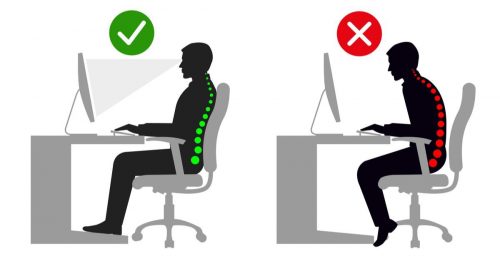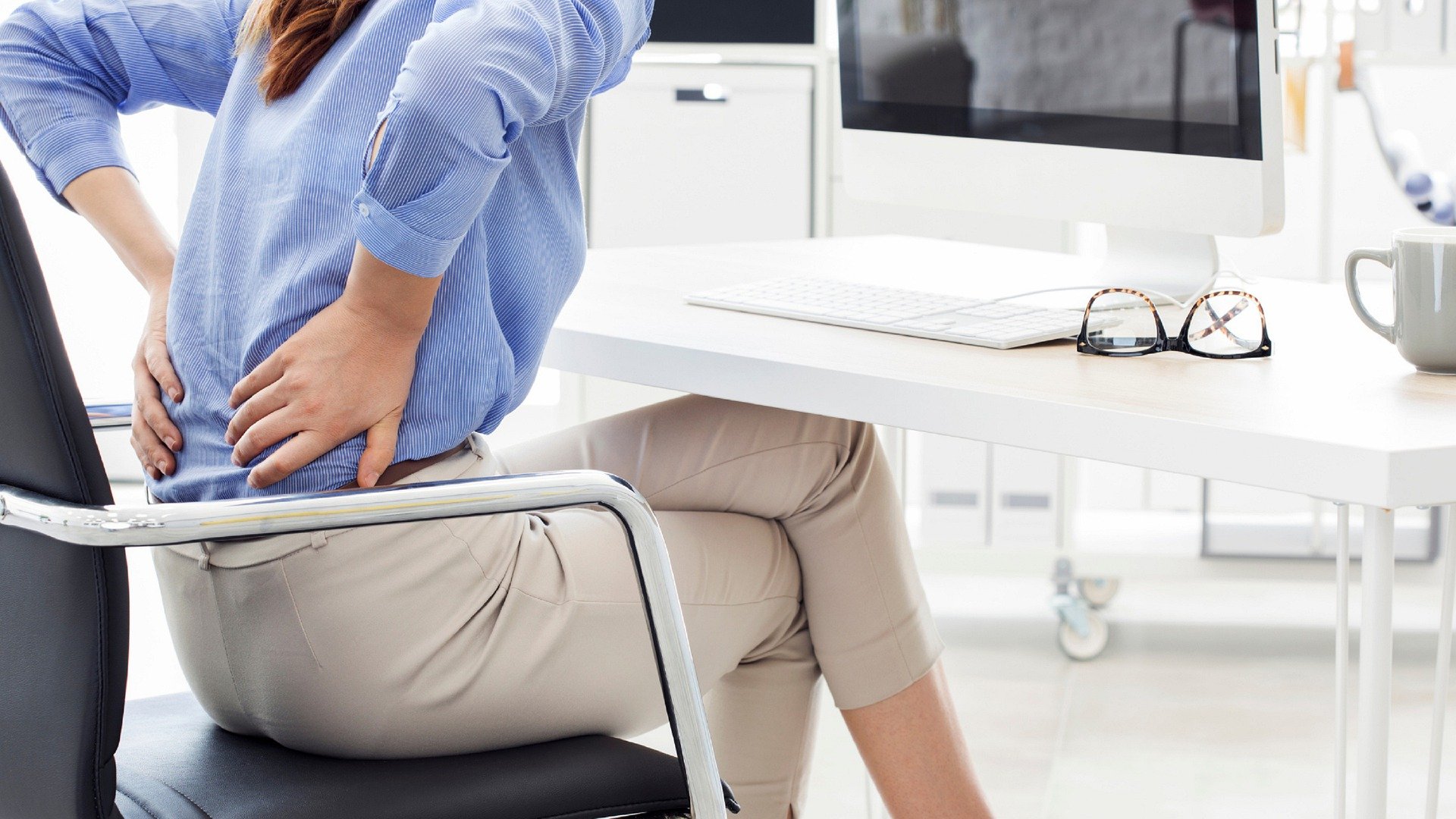February 3rd 2022
With more and more people working from home these days, ergonomics has never been more important. Understanding what ergonomics is, and how it can help you in the long run, is the first step you can take to improving your body’s overall health.
We’re going to give you some quick and easy changes you can make to your working from home set up, as well as how to position yourself correctly during your workday to take the stress off of your bones and muscles.
1. Your Chair
The chair is by far the most important piece of furniture when discussing ergonomics. It dictates your posture almost as much as your own body does.
When choosing a chair, look for one that fully supports your spine when in a resting position, and with enough padding on the seat for your bottom. Many modern office chairs are specifically designed with ergonomics in mind nowadays, so you should have plenty to choose from, in many price brackets. We can’t put a price on your spine, but higher price tags (naturally) tend to deliver a better seated experience.
Check the height of the chair and ensure you’re sitting with your feet firmly set down, and your thighs parallel to the floor to optimise blood flow. Sitting up right, gently leaning against the back of the chair will also help to minimise stress on the spine.
2. Your Arms
When it comes to arm positioning, make sure you’re not putting any extra pressure of your wrists. A way to compensate for this is keeping your wrists in a neutral forward position with your hands when typing or mousing. Keep your elbows close to your sides, if possible, and relax the shoulders.
Good armrests on your chair can help to alleviate aches or stop them from happening altogether. Place your elbows on the armrests and allow your relaxed shoulders to place the necessary pressure to achieve a comfortable position. Avoid resting on hard surfaces such as the edge of your desk.
3. Your Posture
This goes without saying, but don’t slouch! Slouching is easily the worst way to sit when working in any office scenario. Due to the more informal nature of working from home, it’s quite easy to slouch when no one is there to tell you otherwise, but you must be more cognisant of how you sit in order to stave off long-term health and body issues.
Pad your seat with cushions, if your chair padding is not enough for you, or place a rolled-up towel at the base of the seat, to support your lower back.
Standing desks (or adjustable height desks) are a fantastic way to not only change up your working positions throughout the day, but also lessen the stresses on your body when being in one position for too long.
4. Your Feet and Legs
Keeping your feet firmly flat on the ground is the best way to allow any pressures of the body to flow continuously and not get stuck in one area. Using a footrest if it’s more comfortable is also great, but always ensure your feet are as flat as possible.
Ensure that there is enough space under your desk for your legs to fit comfortably. You don’t want to have to contort any part of your body to fit at your workstation. This means not sitting in front of drawers, cabinets or anything that means you have to reach forward.
5. Your Neck
If working on a desktop PC, your head should ideally be level with your monitor(s). Laptops may not ensure this, but always keep in mind the stress on your neck if it’s bending forward to view your screen.
A good headrest can do wonders for your neck too when working. In those moments when you’ve completely a piece of work and are having a rest, lay your head and neck gently against the headrest for maximum comfort.
Ensure good lighting to minimise eye strain, which can easily lead to blurry vision, headaches, and neck pain in the long run.
6. Your Eyes
When it comes to caring for the eyes when working, we like to suggest the 20/20/20 rule. 20 minutes working at the screen, and then 20 seconds looking at something 20 feet away. This technique can help to reduce eye strain and gives your eye muscles a much-needed break.
Computer monitors that too bright, too dim or have any sort of flicker should be adjusted to compensate. Your eyes need to be able to focus on the screen without having to strain in any way to see or read what’s there. Adjust the settings on your monitor in such a way that you feel comfortable viewing without having to hyper focus, causing the eyes to overwork.
7. Your Keyboard and Mouse
As silly as this sounds, keep your keyboard within reaching distance. Far too often, we see people having to extend their arms far too much to reach it, which can cause issues with the elbows and wrists.
You should be able to reach both your keyboard and mouse without having to stretch from your natural sitting position. If necessary, you can get a mouse mat with a built-in gel wrist rest to minimise strain in your arms when using the mouse. Make sure your wrists are straight and you elbows close to you when using the keyboard and mouse.
8. Your Screen/Monitor
As mentioned previously, keeping your head at eye level with your monitor is the optimal viewing angle. If you have to drop your head too much to view your screen, you’ll be doing more harm in the long run to your neck and back.
When using a double monitor set-up (or more), position them so that you can view them all with minimal head and neck movement, and keep them all level with one another. If using a laptop, consider purchasing an external monitor to connect to it, so you can keep the screen level with your eyes.
9. Lighting
Lots of natural light can benefit the body in a multitude of ways. It can contribute to good overall mental wellbeing and motivation when working, as well as reducing the possibility of headaches. Your monitor/screen lighting should be typically brighter than the light flowing into your workspace, so that you can comfortably view the screen without having to strain the eyes.
If working at night or in the evening when no natural light is available, ensure your space is brightly lit, preferably with overhead/main room lighting. Also consider the colour of the light in your space, as this can contribute to lower or higher productivity levels when taken into account. Yellow tones are easier on the eyes, as opposed to the typical bluish tones of traditional fluorescent lights.
10. Take Regular Breaks!
Taking regular breaks is something that everyone should do, no matter where or how you work. Stay hydrated, ideally by drinking water, throughout the day to maintain good focus when working.
Get up from the chair and stretch regularly, as this will help to reset any built-up pressures your body may be feeling. You can do this for one or two minutes every 20-30 minutes or take a 5-minute break per hour. Taking these small, regular breaks can once again contribute to a more positive mental wellbeing, as well as enabling you to feel a better work life balance.

If you’re able to take on-board all of the tips we’ve discussed today, we have no doubt that your body will thank you in the long run. Taking ergonomics seriously, whether at home or in the office, is a great step to ensuring overall long-term health.
If you’re in the market for a new office space, take a look at our serviced offices today. If you’re looking for a space you can customise, ensuring ergonomic excellence, head over and view our managed offices!
